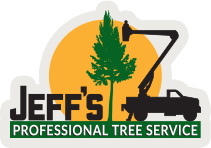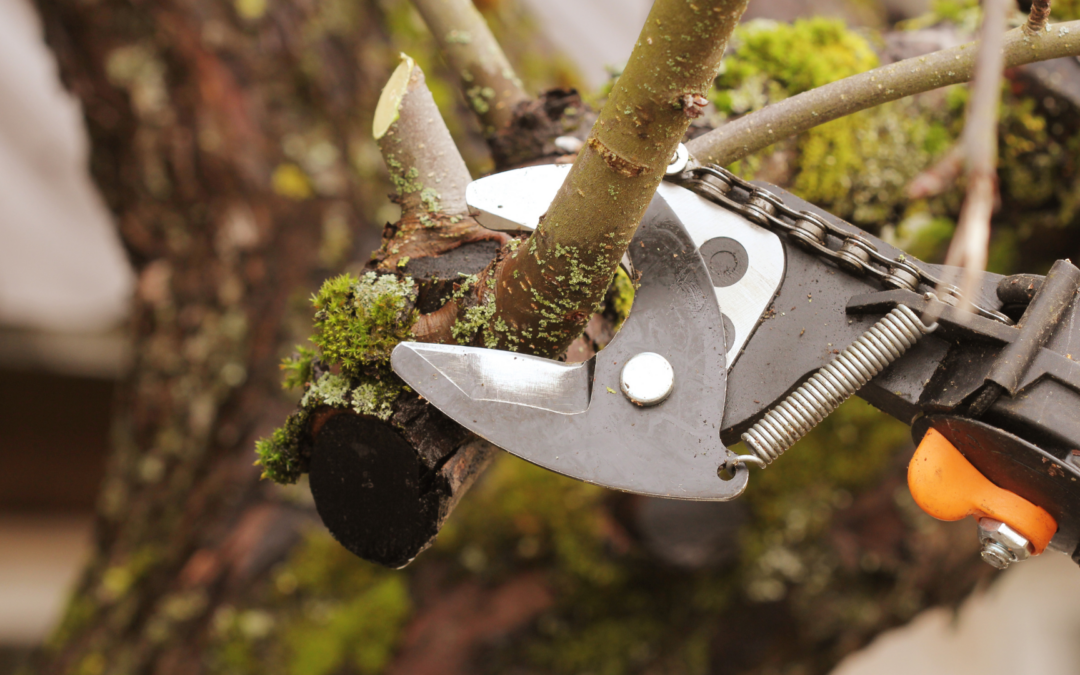Welcome to Jeff’s Tree Service blog, where we’re dedicated to providing top-tier tree pruning services
and insights into maintaining vibrant, healthy, and safe green spaces. Today, we’re presenting an all-
encompassing guide to tree pruning – a fundamental aspect of professional tree care that extends far
beyond mere aesthetics. Whether you’re a dedicated homeowner with a passion for gardening or a
property manager aiming to uphold the beauty and safety of your green assets, grasping the intricacies
of when, why, and how to prune trees is crucial. Let’s embark on this enlightening journey.
Understanding the Importance of Tree Pruning
At the heart of landscape aesthetics and the vitality of our natural surroundings lies tree pruning, an
essential practice with benefits spanning health, safety, and visual appeal. Here’s a closer look at its
significance:
Promoting Tree Health
Pruning is vital for removing dead, diseased, or insect-infested branches, thereby averting potential
hazards and bolstering a tree’s overall health. This process encourages better air circulation and sunlight
exposure, crucial elements for the flourishing of trees. By engaging in regular pruning, you not only
safeguard the tree’s vitality but also ensure its growth is robust and healthy.
Ensuring Safety
Neglecting the need for tree pruning can lead to dangerous consequences, including the risk of falling
branches that pose significant threats to people, property, and the trees themselves. Through strategic
pruning, we mitigate these risks by eliminating potential hazards, reducing the tree’s weight, and
maintaining clear visibility for pathways and thoroughfares.
Enhancing Aesthetic Appeal
The visual benefits of well-pruned trees cannot be overstated. Beyond their health and safety
advantages, pruning plays a crucial role in enhancing landscape aesthetics. It removes unsightly
branches, shapes the tree to complement its surroundings, and can significantly increase property value
through improved curb appeal.
Seasonal Guidelines for Optimal Tree Pruning
Timing is everything when it comes to pruning. The season in which you choose to prune can have a
profound effect on a tree’s health and growth. Below is a detailed seasonal guide:
Winter Pruning
Late winter, just before the onset of spring growth, is an ideal time for most pruning activities. During
this dormant period, trees are less susceptible to harm, and wounds heal faster, minimizing the risk of
disease or pest infestation.
Spring Considerations
While spring may tempt you to prune, it’s crucial to exercise restraint. Postpone major pruning until late
in the season, focusing instead on removing dead flowers and any branches that are dead or diseased.
Summer Pruning
Summer pruning should be undertaken with specific goals in mind, such as slowing down growth where
necessary or addressing any unsafe overgrowth. This targeted approach ensures the tree’s health and
safety are maintained without impeding its natural growth cycle.
Fall Pruning
Pruning during the fall is generally discouraged due to slower healing of cuts and the increased
prevalence of fungi spores, which can lead to diseases.
The Benefits of Professional Tree Pruning Services
While the allure of DIY tree pruning is undeniable for small-scale tasks, the complexity and risks
associated with pruning necessitate professional expertise, especially for significant projects. Here’s why
enlisting professional tree care services, like those offered by Jeff’s Tree Service, is advantageous:
Expertise in Tree Health: Professionals possess the knowledge to identify which branches need pruning
for the tree’s health and optimal growth.
Safety Assurance: With the right tools and techniques, professionals ensure the safety of both the tree
and the individuals performing the pruning, particularly for tasks involving high or large branches.
Enhanced Aesthetic Outcome: Expert pruning services contribute to a tree’s beauty and the overall
aesthetic of the landscape, ensuring trees are not only healthy but also visually pleasing.
DIY Tree Pruning Tips
For those inclined towards DIY tree pruning, here are some essential tips to ensure your efforts are
effective, safe, and beneficial for your trees:
Understand Your Tree: Research your specific type of tree to determine the best time and method for
pruning.
Use the Right Tools: Ensure you have sharp, clean tools to make precise cuts and reduce the risk of
disease.
Start Small: Focus on dead or diseased branches and avoid over-pruning, which can harm the tree.
Safety First: Wear appropriate safety gear and avoid pruning near power lines or high up without proper
support.
Emphasizing the Value of Professional Services
While the guide above offers a solid foundation for understanding and undertaking tree pruning, the
complexity of some tasks necessitates professional intervention. Jeff’s Tree Service specializes in
providing comprehensive tree care, from routine maintenance to complex pruning projects. Our team of
experts is equipped with the knowledge, tools, and experience to ensure your trees remain a vibrant,
safe, and beautiful part of your landscape.
Tree pruning is an art and science that plays a critical role in maintaining the health, safety, and
aesthetics of our natural surroundings. Whether you’re embarking on a DIY pruning project or seeking
the expertise of professionals, understanding the when, why, and how of tree pruning is essential. For
those tasks that require a professional touch, Jeff’s Tree Service is here to help. Our commitment to
excellence and our deep understanding of tree care ensure that your green spaces are in the best hands.
Contact us today to learn more about our services and how we can assist in enhancing the beauty and
safety of your property.


Recent Comments